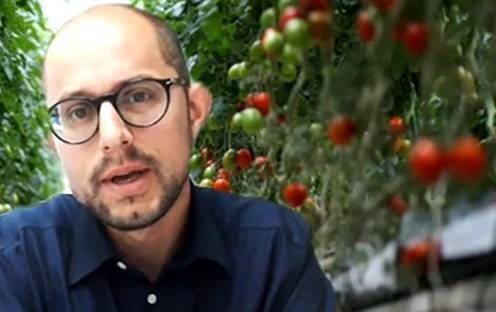Yesterday, Bayer organized a ForwardFarming webinar. Jan de Ruiter, a Sector Banker Agricultural at Abn Amro, was one of the speakers. He kicked off the live panel discussion and talked about innovation within the sector.

Jan has been in contact with many growers looking to develop their companies further and innovate. In essence, it is about the entrepreneurship of the growers in the broadest, most innovative terms, which he monitors from a banking and financing perspective.
Jan follows the global development of trends in this field closely. The knowledge he gains from doing, so he shares with his colleagues. His role does not only regard the field on a national level but also an international level. He travels around the world to gain his knowledge as well as share it.
Food supply, labor, health, sustainability, and investments
Labor is a factor that definitely needs to be taken into account. In many places, the demand for labor is greater than the supply. Or how about labor costs? Is it, and will it remain, profitable to keep hiring people? Or do we need to look for alternative solutions? In any case, one must keep in mind the working conditions when looking at the total costs.
Due to our current eating patterns, health is a topic that comes up a lot. We are now more aware of that than ever before. As well, we should. Healthcare, if we are being honest, is becoming increasingly more expensive due to modern diseases such as obesity. Nutrition is also being used more often to combat illnesses actively, so the ingredients in the food we eat deserve our attention as well.
Energy, the environment, and the social effects of horticulture require a sustainable approach. Sustainability is, therefore, one of the concepts on Jan’s list when it comes to the driving factors for innovation. Just take a look around you; there are plenty of examples of this. Frans Timmermans is working on this in Europe with his Farm-to-Fork strategy, which is part of a comprehensive program to make the food chain, from the farmer to the consumer's plate, more sustainable. The strategy also needs to contribute to decreasing the impact food production has on the environment and climate.
The world has a lot of money to spend on new initiatives to create new ways of cultivating, such as indoor and vertical farming. There is also a lot of attention and money available for creating new food products. For example, new varieties of plants, but also insects and seaweed products.
The growing world population, the demand for fewer waste products, and climate change (read: the cry for innovation) complete the picture.
There are plenty of reasons to keep a close eye on the agricultural and horticultural sectors. They have to be, and always remain, a sector that keeps on innovating.
 Jos Pauwels, Head of Sales Bayer Crop Science NL, was chairman of the day during the webinar
Jos Pauwels, Head of Sales Bayer Crop Science NL, was chairman of the day during the webinar
For more information:
De Ruiter Seeds
www.deruiterseeds.com
info@deruiterseeds.nl
